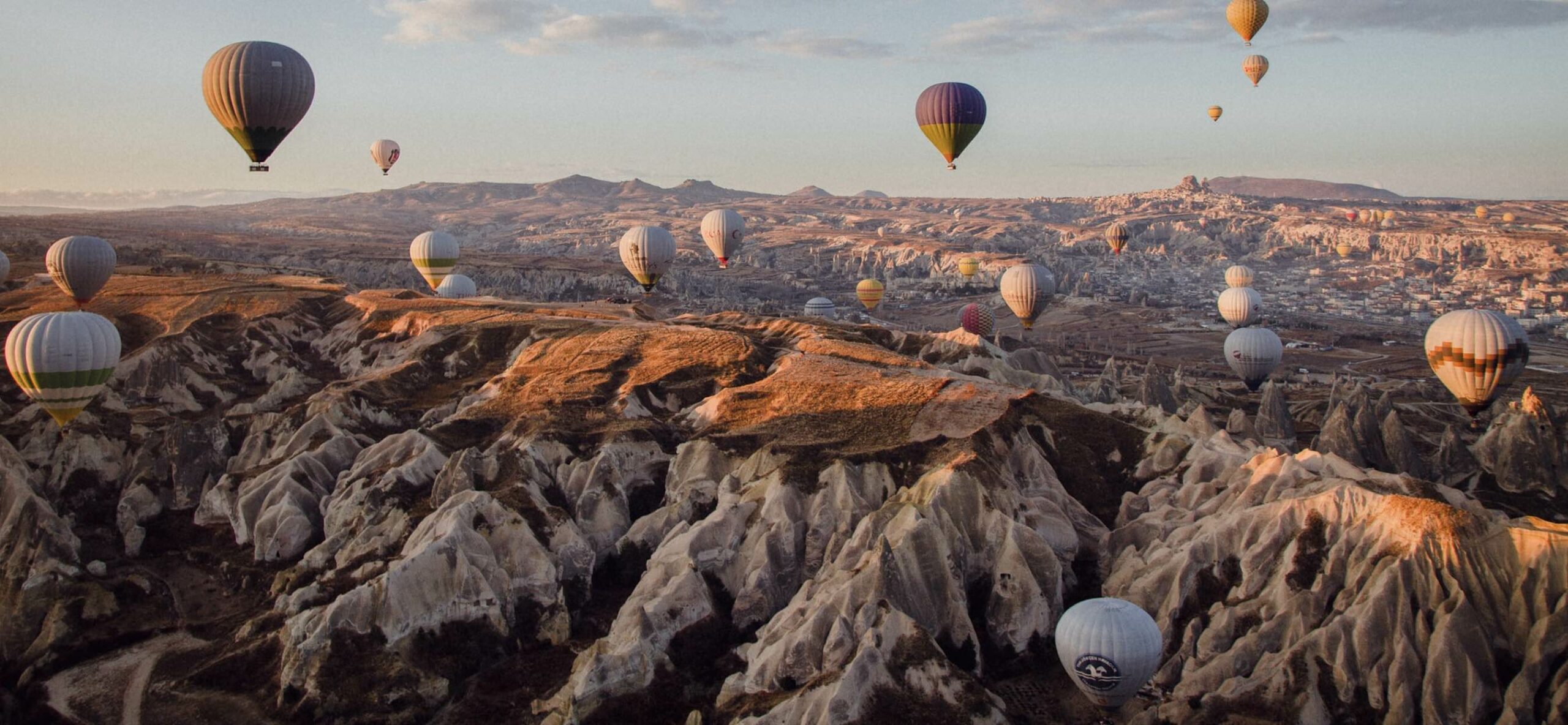By now, the appeal of Cappadocia’s hot air balloons is well-documented, but what else is there? Plenty, as it turns out.
Few sights on the planet can compete with that of brightly coloured hot air balloons – literally hundreds of them – collectively taking flight over the surreal, spectacular landscapes of Cappadocia at sunrise. It’s a must on any bucket list. And far from overhyped. And with the country’s ongoing currency crisis only intensifying, the time to visit Türkiye is circa now.
Incidentally, the average tourist will hightail it out of Cappadocia soon after climbing out of the woven wicker basket, never taking an additional day or two to indulge in slow travel – but therein lies the problem. Here, we’re about to remedy that by going beyond the clichés of this fascinating region.
A Hairy Affair
Let’s start with the basics – Cappadocia isn’t actually a city, contrary to popular belief. It is a historic region located in Central Anatolia and comprises five provinces: Aksaray, Nevşehir, Niğde, Kayseri, and Kırşehir. You’ll likely stay in Göreme, a town in Nevşehir and the hub of all things tourism, but a day trip to nearby Avanos comes highly recommended. Anchored in the art of pottery, it’s located on the aptly named Red River, where the red clay deposits that lie on its banks have been used to make household products since the Hittite period.
Today, this translates to a laidback town that’s home to pottery demonstrations, pottery workshops, and a pottery shop that has earned infamy for what resides in its basement: a full-fledged hair museum. Not for the squeamish, the Hair Museum of Avanos is located within Chez Galip and was founded by ceramic artist Galip Körükçü practically by accident. A friend of his snipped off a lock of her hair as a memento when she was leaving Avanos – this was back in 1979. Other female visitors at the shop followed suit, with the hair of an estimated five million women from around the world now adorning every last inch of this subterranean space, ceilings included. Photography isn’t allowed as each ‘exhibit’ carries a corresponding address and handwritten note, echoing the strands that started this strange tradition. As for Galip’s stance on collecting the hair of men? No, thank you.

A Woman’s Touch
Beyond the tourist trail is Kadıneli, a stylish little restaurant run by a women’s cooperative and rooted in home-style cuisine. Located in the town of Uçhisar, its name translates to ‘woman’s hand’, and there’s plenty of those behind the scenes. All the employees, from the cooks and dishwashers to the hostess and waitresses, are women. Brave women. This NGO may have been formed in order to create employment opportunities for the fairer sex, but Kadıneli actually faced backlash when it opened in 2015 – traditional gender roles are alive and well in Anatolia, so the idea of husbands watching the kids while the wives go off to work was practically unheard of.
Admittedly, the menu is limited, but this is a spot where quality trumps quantity. You’ll dine on Turkish staples like gözleme (flatbreads stuffed with cheese or potato), yaprak sarma (stuffed vine leaves), and menemen (scrambled eggs with tomatoes and peppers). The homemade manti, meanwhile, is a must-order. This Turkish take on dumplings features ground lamb or beef painstakingly folded into little pieces of dough that are then boiled and crowned with garlicky yoghurt. Stocking up on gifts to take back home? Pair a meal at this lesser-known gem with a pit stop at the onsite shop that sells the likes of seasonal preserves and knitted toys before burning off the calories at Uçhisar Castle, the highest point in Cappadocia.

Amongst the Tat
Speaking of purchases that you won’t regret, the streets of Cappadocia are full of souvenir stores riddled with kitsch – think: magnets, miniature hot air balloons, and fairy chimney ornaments. Admittedly, they’re cheap and easier to pack than carpets and ceramics, but resist the urge to impulse buy. Your cash can be better spent at Melih’s Gourds (intricately carved lamps made using dried gourds), Sultan’s Charm (organic soaps and luxe hammam products), Yastik’s (one-of-a-kind cushions accented with cultural references), and Cappadocia Bazaar (freshly made lokum in a whole host of flavours) – all of which are located in Göreme.
For a souvenir that screams Cappadocia, albeit with a backstory that’s still under debate, opt for a handmade doll from the village of Soğanlı. Legend has it that the original Soğanlı doll was made many decades ago, when a woman was grieving the death of her child and made a rag doll of sorts in search of some respite. Others say that these dolls have been made by local women for their children for several centuries now. Regardless of which version is true, these little trinkets adorned in traditional clothing are in such demand that entire families in the village are able to make a living off them. Go on, help the local economy with this one – even if you have yet to determine the lucky recipient.

Walk This Way
Between its otherworldly rock formations, abandoned cave dwellings, and trails of varying difficulty, Cappadocia is an ideal destination for hiking enthusiasts. Red Valley is rated highly for its crimson hue and sunset spots, while Pigeon Valley conveniently connects the towns of Göreme and Uçhisar. None, however, are as unique as Moonlight Cappadocia.
Jointly hosted by Uzunetap and Argos Culture and Arts, this three-hour guided hike through Rose Valley is illuminated by – you guessed it – moonlight and held monthly on the night of the full moon between April and October. Along the way, you’ll pause for freshly squeezed pomegranate juice, crawl into Crusader Church to view the detailed ceiling fresco, and even attend a candlelit musical performance in an ancient cave church with soaring columns. Above all, the nocturnal perspective of all those fairy chimneys is just plain magical.



